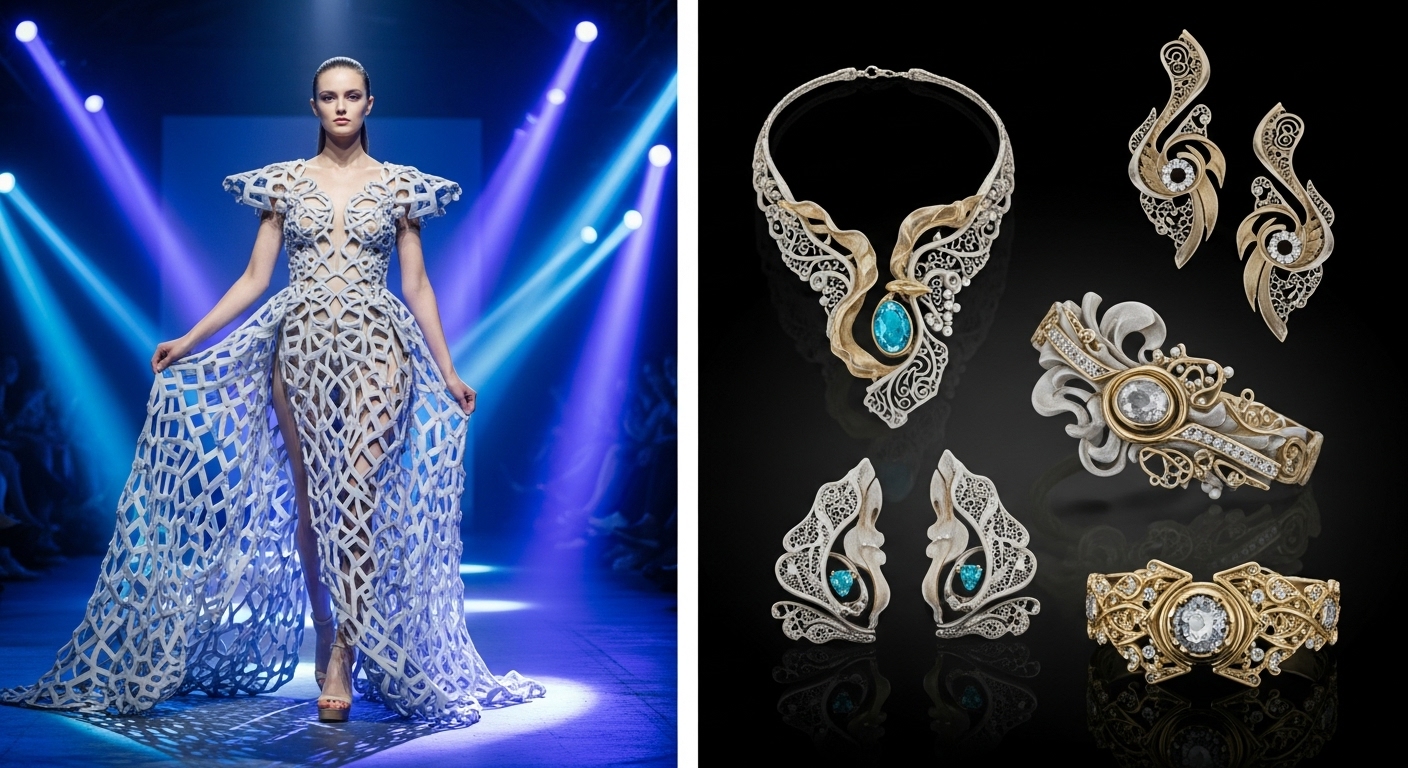The intersection of technology and design is producing striking results—especially in the world of 3D printing in fashion and jewelry. What was once reserved for prototypes or runway novelties has now evolved into a practical and creative tool for producing wearable, customizable, and sustainable products that challenge the norms of traditional manufacturing.
Why 3D Printing Appeals to Fashion and Jewelry Designers
Designers working in fashion and jewelry face specific challenges:
- The need for intricate detail and artistic expression
- Short production runs for exclusive pieces
- Demand for lightweight yet durable materials
- Pressure to adopt more sustainable practices
3D printing meets all of these needs—enabling bold designs, eliminating the need for molds, and reducing material waste.
Key Applications of 3D Printing in Fashion and Jewelry
1. Custom Jewelry Designs
Designers use resin or metal 3D printing to create rings, bracelets, and pendants that wouldn’t be possible using traditional casting alone.
2. Rapid Prototyping for Fit and Aesthetics
Concepts can be printed, tested, and worn in the real world before a final version is produced.
3. Experimental Fashion Pieces
Runway designers are using flexible materials like TPU and nylon to print dresses, shoes, and accessories that combine textile movement with digital geometry.
4. Mold Creation for Casting
3D printed wax or resin molds streamline the investment casting process—particularly valuable in fine jewelry manufacturing.
5. Made-to-Order and Personalization
Designers can create on-demand pieces tailored to the customer’s preferences or body measurements, with no need for excess inventory.
6. Sustainability-Focused Accessories
With biodegradable filaments and local production, designers reduce reliance on mass manufacturing and shipping logistics.
Advantages Over Traditional Methods
- Complex Geometry
Delicate lattice patterns, interlocked elements, and sculptural forms are easy to achieve with 3D modeling software. - Zero-Waste Prototyping
Materials are used only where needed, reducing scrap. - Mass Customization
Every product can be slightly different, offering consumers more choice without increasing production complexity.
Emerging Trends
- Biodegradable fashion materials like PLA blends for eco collections
- 3D-printed eyewear frames and accessory lines
- Generative AI used in designing unique, wearable shapes for printing
- Hybrid workflows combining 3D-printed components with traditional textiles
3D printing in fashion and jewelry is redefining what’s possible in wearables. As the boundaries between digital fabrication and artistic design continue to blur, more creators are using additive manufacturing to craft pieces that are bold, personal, and sustainable—opening new paths for innovation across the industry.


